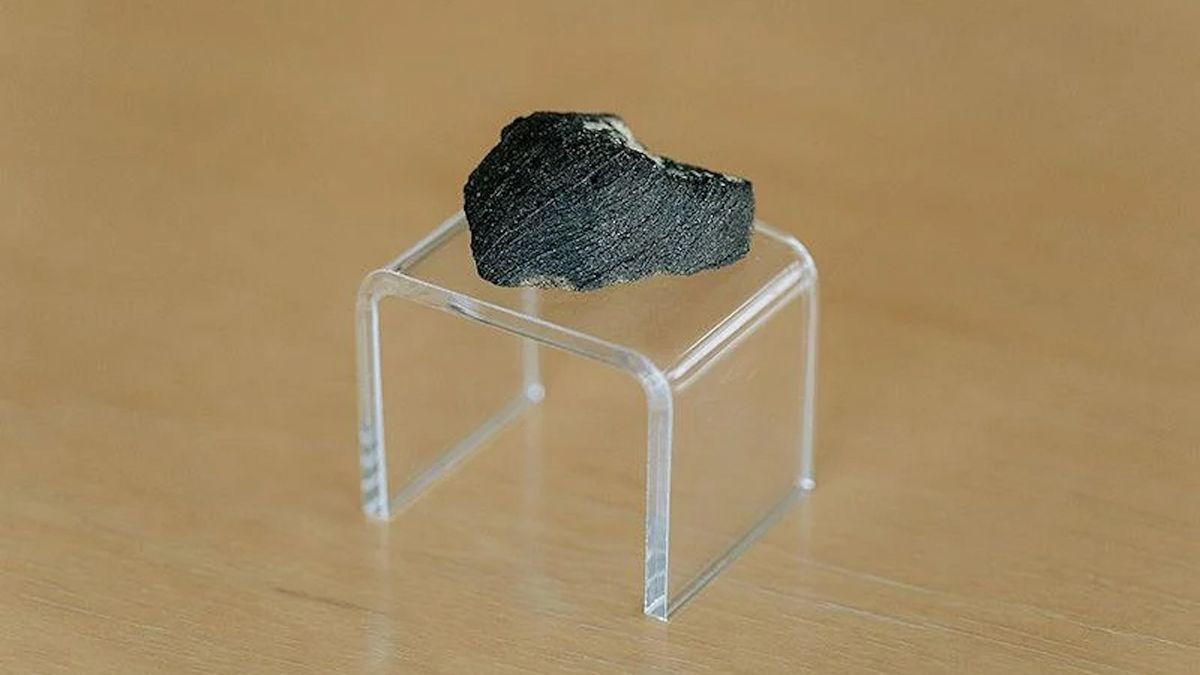What to Know about Eastern Equine Encephalitis Virus Spread by Mosquitoes
A rare and deadly mosquito-borne disease has been popping up again this summer: eastern equine encephalitis, a viral illness that causes brain swelling in severe cases and has claimed at least one life in the northeastern U.S. State officials announced this week that a New Hampshire resident died after the disease attacked their central nervous system, and two people in Massachusetts and Vermont were hospitalized with the virus earlier this month. The cases and high numbers of mosquitoes testing positive for the virus have driven at least one Massachusetts town to enforce evening closures of public parks and playfields and another to announce a voluntary curfew on outdoor activities, including sporting events, to minimize exposure when mosquitoes are most active. The state’s health department is spraying insecticide from trucks and aircraft in two counties where risk of the disease is high.
An average of 11 cases of eastern equine encephalitis are reported in the U.S. each year, mostly concentrated in eastern and Gulf Coast states. Some years are worse than others, according to Stephen Rich, a professor in the microbiology department at the University of Massachusetts Amherst and director of the New England Center of Excellence in Vector-Borne Diseases. “Early on, folks that are most actively involved in mosquito control had been anticipating that we were about due for another big year,” he says. Other mosquito-borne diseases, including dengue and West Nile virus, are also causing national concern this summer; Anthony Fauci, former director of the National Institute of Allergy and Infectious Diseases, was recently hospitalized after becoming infected with West Nile in Washington, D.C.—and told STAThe had “never been as sick in [his] life.”
Scientific American spoke with Rich about transmission, symptoms, prevention tactics and vulnerability to severe disease.
On supporting science journalism
If you’re enjoying this article, consider supporting our award-winning journalism by subscribing. By purchasing a subscription you are helping to ensure the future of impactful stories about the discoveries and ideas shaping our world today.
[An edited transcript of the conversation follows.]
What causes eastern equine encephalitis in humans?
It’s caused by eastern equine encephalitis virus, which is an arbovirus—a general term for viruses transmitted by arthropods, such as mosquitoes or ticks. The virus is largely maintained in birds and transmitted from bird to bird by mosquitoes. There are naturally occurring cycles of these things in the wild, and depending on the species, some mosquitoes tend to be quite specific in what they’ll feed on. So as long as mosquitoes are only feeding on birds that are infected, then they’re maintaining this cycle enzootically—meaning they maintain it in the wild.
What’s an issue is that some mosquitoes are not so choosy, and they will choose to feed on a bird sometimes, and then they’ll choose to feed on a mammal other times. Two mammals that very often end up as the victims of that transmission are people and horses—hence the name eastern equine encephalitis. We call that mosquito that takes the virus from birds into people a bridge vector. Culiseta melanura and Coquillettidia perturbans are two of dozens of mosquito species implicated in transmitting the disease.
What do we know about the timing of cases?
Eastern equine encephalitis tends to be somewhat cyclic on a several-year cycle. Early on, folks that are most actively involved in mosquito control had been anticipating that we were about due for another big year. What you’ll see is one big year—and by big year, I mean maybe half a dozen to a dozen human cases, which is terrible—to then low years, where you won’t see anything [in most places]. You won’t even see infected mosquitoes. So where [the virus] comes from is sort of a persistent question because it [largely] goes away for a few years, and then it comes back.
One possibility of what’s happening is: it’s being carried northward by migrating birds. Birds may periodically pick up the virus in the southern habitats in the winter and bring them up north in the summer. The mosquitoes are already here [in the Northeast]. If the virus gets into these mosquito populations, it amplifies. Amplification is a good word to describe what happens in a year like this one when we have [multiple cases of] eastern equine encephalitis virus. Early on in the summer, there may be a very small percentage of birds infected and probably almost no mosquitoes infected. The mosquitoes start feeding on birds; they pick up infection and transmit it to birds that weren’t infected. Now that bird’s infected and … infects another mosquito, and so on. And all summer long, as the mosquito populations build, that amplification of virus in the birds just grows till we get to this point, in these bad years, that there’s a high incidence—and then it starts to spill over to a greater extent by those bridge vectors that carry it from the bird cycle into people.
What are the symptoms of the disease?
So one important distinction to be made is between infection and disease. Lots of people probably get exposed to the virus and not infected. A certain number of people get exposed and infected but don’t get sick. And then a relatively small proportion of people get exposed and infected and then develop some degree of disease. It can range from a mild illness that may include flulike symptoms, fever or headache. These mild cases self-resolve for one reason or another—maybe the virus isn’t able to make it into that blood-brain barrier [to be able to cause encephalitis], or the immune system is competent in the individual, so they fend off the infection. In the extreme case, you get the version of the disease for which the virus is named—where the virus crosses the blood-brain barrier, causes swelling of the cells inside the surface of the brain and causes increased pressure.
How is eastern equine encephalitis diagnosed and treated?
It takes a few days for the virus to amplify inside the body and to make that cross across the blood-brain barrier, but usually it’s a relatively short period of time after the mosquito exposure. One thing about encephalitis, which can also be caused by bacterial infections and different things: the condition itself generally doesn’t go undiagnosed. It’s not like people end up in the hospital very sick with encephalitis and clinicians can’t figure out what’s going on. Usually the root cause is apparent.
There’s really no treatment for it. We treat the symptoms—keep the patient hydrated and all those kinds of things—and hope there are no long-term consequences, but there’s no magic antivirals or a vaccine that’s going to solve the problem. Unfortunately, a high percentage of [severe eastern equine encephalitis cases] are lethal cases. It is notable that many of the people who succumb to these arboviruses tend to be very young or very old—so people with a sort of not-yet-fully-developed immune system or sort of on the convalescent end of the immune spectrum.
What other mosquito-borne illnesses affect the brain?
The short answer would be “most of them.” The major players in the Northeast are eastern equine encephalitis virus, West Nile virus and Jamestown Canyon virus. All three of those can infect and cause inflammation of the brain. Technically Powassan virus—transmitted by ticks—is also an arbovirus, and it, too, can infect brain tissue.
Even in extreme years, however, the number of mosquitoes that are infected [with these viruses] is relatively low—so low that detecting virus in a single mosquito is very unlikely. And when someone is bitten by an infected mosquito, they may or may not be infected. Among those people who are infected, only 4 to 5 percent will develop any kind of disease. Among the 4 to 5 percent who have some kind of disease, about one third are the serious, life-threatening encephalitis version.
What are the best ways people can stay safe from eastern equine encephalitis and other diseases transmitted by mosquitoes?
The best thing in all cases, which is true of most diseases, is prevention—to just avoid mosquito bites to the extent that it’s possible. One thing that we always recommend to people is to consider using a repellent. There are two repellents that are particularly effective and recommended: those that contain DEET [diethyl toluamide] and those that contain picaridin—both compounds. DEET has been in use for 75 or 80 years, and it seems to be very safe. Picaridin doesn’t quite have the same longevity, but it also seems to have a very good safety profile. They both are very effective at masking [us from mosquitoes].
The second thing we recommend is to use insecticides, things that actually kill the insect. There are compounds such as permethrin that can be used to treat clothing. The compounds actually impregnate into the fibers of the clothing, and when the mosquitoes land and crawl around on the treated fabric, they basically absorb the chemicals through their feet, and it kills them that way. And again, the beauty of this is it’s very, very deadly to mosquitoes and very, very safe for human use. There are many different ways you can get your clothing treated with permethrin. Many hardware stores or feed stores, where they sell animal feed, will sell a product that you can treat your own clothing with—just lay your clothes out and treat it according to the directions on the label. But there are also a number of manufacturers that sell products and clothes that are already treated.
People averse to using chemicals for any reason can just do simple things, like wear longer-sleeve shirts or long-sleeve pants when you’re going to be outside where mosquitoes are abundant. You can curtail outdoor activities around the times that mosquitoes are most active, which are in the early part of the day and the latter part of the day. A lot of controversies [related to community-wide preventative actions arise] every time there’s one of these big eastern equine encephalitis years; across the state of Massachusetts, [a high number of mosquito samples] have tested positive for the virus. And that has caused a number of communities to cancel outdoor events, such as Friday night football games or Saturday soccer games in the evening, to try to keep people from getting exposed. Whenever you change people’s behaviors without them having a choice, there’s pushback. There’s no question that if you don’t go outside when mosquitoes are active, you have a very low probability of being exposed. That much we know. Answering the question about whether it’s worth curtailing those activities—that’s much more complicated.
Source link




